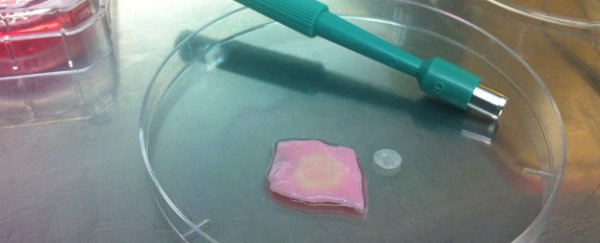Severe burns can often damage several layers of skin, but surprisingly little is known about how the bandages we use on these wounds affect the cells left behind.
Researchers from the Queensland University of Technology (QUT) in Australia are now using a realistic model of skin in order to investigate how common bandage types, such as silver and silicon bandages, impact wound healing in children.
The team is being led by Leila Cuttle, a burns and trauma researcher, and aims to identify the best possible bandages to help heal children's burns with the least amount of pain, scarring and toxicity.
"Silver dressings are standard care for children's burn wounds to reduce bacterial infection while silicone dressings ameliorate the scarring after deep burn injuries," said Cuttle in a press release.
"Little is known of how deeply their components penetrate the skin or how much silver and silicon remain behind in the skin … We need to know if that can be detrimental to the skin, or if they are required to decrease scarring," said Cuttle.
To find out what's going on beneath the surface, Cuttle and her team are using a laser and a mass spectrometer on skin that's been created in the lab.
The laser is first used to vaporise the skin, which is then dressed for a period of six days. Next the mass spectrometer is used to determine the concentrations of elements such as silicon, calcium and silver left behind in skin cells after the wound has been treated with a bandage.
The mass spectroscopy device will allow the team to monitor changes in gradients of the elements across very small distances.
"This is the first time the instrument will be used on skin samples as it has previously been used to blast and analyse rocks and steel," said Tony Parker, who's overseeing the research as part of QUT's Tissue Repair and Regeneration Program, in the release.
"We look at whether the compounds are biologically active and whether they facilitate rapid or effective treatments and how long they remain in the skin cells and whether that may be harmful or not."
The next step will be to use this information to create bandages that allow wounds to heal faster and with less scarring, which will greatly benefit hundreds of thousands of burns victims around the world.
Find out more about the world-leading research happening at QUT.
